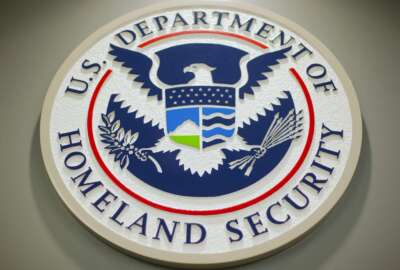IRS struggling to tackle massive surge in identity theft
Faced with declining resources, the Internal Revenue Service has diverted resources from elsewhere inside the agency to try and head off skyrocketing cases of...
wfedstaff | April 17, 2015 4:25 pm
The number of Americans whose identities have been stolen for the purpose of filing fraudulent tax returns has risen exponentially in just the last several years. But the IRS’ tight budgets and inefficient business resources have stymied its efforts to fight the problem.
In 2008, there were 51,700 confirmed cases of tax-refund identity theft in the United States. By 2011, the number was 1.1 million, and those are just the cases the IRS knows about. An audit by the Treasury Inspector General for Tax Administration (TIGTA) earlier this year estimated another 1.5 million potential cases in which thieves stole identities for the purpose of getting fraudulent refunds. And IRS could give out $21 billion dollars in fraudulent refunds in just the next five years if the agency doesn’t find a way to crack down, according to TIGTA.
“People are nimble, and they will use ingenuity when it comes to taking advantage of a federal program, a state program or a nongovernmental program if they think they can get away with it — and they are,” Russell George, the tax IG told the House Oversight and Government Reform Committee Thursday. “And keep in mind this is not only a domestic problem, this is an international problem.”
The IRS estimated it would need another $32 million to investigate those 1.5 million potentially fraudulent returns from 2011 — money it doesn’t have right now, and doesn’t appear to be forthcoming.
“We’ve cut their budget by $350 million,” said Rep. Gerry Connolly (D-Va.). “You can be smart all you want, that’s a real cut. It means they’re handicapped in terms of the resources they need to be dealing with this subject in an efficacious way.”
Bigger budget isn’t only answer
The IRS said it recognizes the magnitude of the problem. So, despite the budget squeeze, it reallocated money and staff internally, doubling the size of its workforce that handles identity theft, and officials will assign 3,000 people to the issue for the upcoming tax filing season.
But George said that’s far from a perfect solution.
“It’s a zero-sum game. Unless they’re given additional resources, they have to take people from one function and apply them to another,” he said. Even with the increased attention to identity theft, TIGTA and the Government Accountability Office say IRS is falling behind, and a bigger budget isn’t the only answer.
“One thing to note is that despite the increase in resources IRS has devoted to the problem, the problem continues to grow and get worse. They’re not keeping up,” said James White, the director for strategic issues at GAO. “And resolving cases after the fraud has occurred is very labor intensive. It’s a huge hit to the budget. The trick here is figuring out a way to prevent the fraud in the first place. That means doing more research up front, experimenting with better filters to prevent the fraud. That way you avoid this time-consuming, costly process that’s so terrible for the victims.”
IRS said it’s focused on prevention too. The bureau will expand this year a pilot program to 600,000 users that issues secret PIN codes to taxpayers who’ve been identity theft victims in the past to prevent them from being the subjects of fraud again. Also, the agency said it’s making more use of third-party data help to automatically flag returns that appear to be fraudulent.
“We have an initiative called Real Time, and that gets to the heart of the matter,” said Beth Tucker, the deputy IRS commissioner for operations support. “It will make basic information documents available to us so we can match them up quickly with a return when it comes in the door. That does stem an enormous amount of this fraud. So that is something we’ll be doing some additional testing on this upcoming filing season, using data analytics and the computing capabilities we have.”
Better use of computer matching
GAO and TIGTA have plenty of other recommendations for IRS in the area of identity theft though. For instance, banking industry regulations require that direct deposits into checking accounts match up with the name of the account holder. TIGTA said IRS doesn’t follow those regulations, so in one case, one fraudster was able to have 590 separate refunds totaling nearly $1 million deposited into a single account.
And George said the agency also could make better use of data the government already has to verify the identities of tax filers.
“For example, the Department of Health and Human Services has the National Directory of New Hires. If the IRS had expanded access to that directory, which would require statutory changes, it would allow the IRS to better match the withholding and income information provided by a taxpayer to make sure it’s accurate,” he said. “Most recently, the IRS gained access to the Social Security Administration’s database that deals with 1099s. That’s assisted it in stemming tax cheats in the Social Security arena.”
Nina Olson, IRS’s independent National Taxpayer Advocate, said IRS isn’t making the best use of the resources it has when it comes to dealing with taxpayer identity theft victims. She said the agency’s process for working with customers is becoming decentralized – with identity theft specialists working in the various silos of the agency’s mission areas. The IRS had set up a one-stop shop for identity theft called the Identity Protection Specialized Unit (IPSU) in 2008, but Olson claims the unit’s role has been diminishing in recent years.
“The IRS doesn’t track how many issues or how many tax years a particular taxpayer is dealing with. They don’t have a sense of the complexity of these cases or the big picture, but my evidence demonstrates that the vast majority of these cases have more than one issue and they’re going to get bounced around between units,” she said. “I’m very concerned about this. This is the most significant issue victims are going to be facing next year. We have a traffic cop, the IPSU, and it needs to be beefed up. But I’m afraid they’re going to reduce the focus on that cop that makes sure the traffic gets from the right specialized unit to the other.”
Taxpayers are being harmed
Other potential fixes to taxpayer identity theft are the responsibility of other agencies. For instance, Olson said, the Social Security Administration’s Master Death File is a treasure trove of information for thieves. It includes Social Security numbers and other personal information from recently deceased Americans that’s ripe for the picking, and for now, its contents are widely available through commercial data providers.
But Olson also agreed the IRS’s diminished staffing in the face of increasing responsibilities is a huge problem. Her office rated it the number one issue in a report to Congress this year.
“The taxpayer is really being harmed by the diminution of taxpayer service funding to the IRS, and that will come back in reduced compliance, reduced collection and general frustration, not just with the IRS but with the federal government as a whole,” she said. “That is not a very good recipe for good administration, much less good tax administration.”
RELATED STORIES:
IRS missing billions in ID theft
IRS head apologizes to ID theft victims
IRS says 105 targeted in ID theft sweep
Copyright © 2025 Federal News Network. All rights reserved. This website is not intended for users located within the European Economic Area.
Jared Serbu is deputy editor of Federal News Network and reports on the Defense Department’s contracting, legislative, workforce and IT issues.
Follow @jserbuWFED






